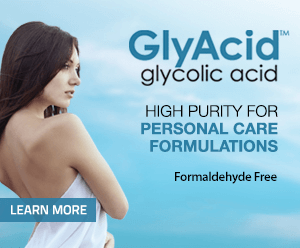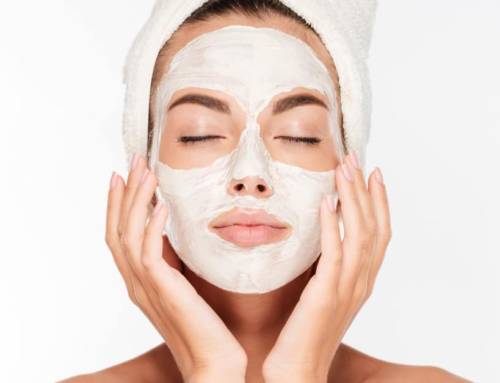The Acne Attacker: 4 Key Ways Glycolic Acid Battles Breakouts
September 10, 2020

“I think people underestimate how much glycolic acid does,” Dr. Sapna Palep, a board-certified dermatologist, told Good Housekeeping. “It works for anti-aging. It’s very good for acne. It stops acne from the get-go — from the comedone stage. Patients come to me like, ‘I hate these blackheads on my nose, and my pores feel so big.’ I put them on glycolic right away.”
Glycolic acid helps to quickly and effectively battle acne and improve overall skin health and appearance via 4 key capabilities: gentle chemical exfoliation, antimicrobial properties, moisture retention, and an ability to improve skin tone and texture harmed by breakouts.
Expertise in exfoliation
Thanks to its small molecule size and weight, glycolic acid is best able to quickly penetrate the skin cell. It then works to dissolve the gluey bonds that cells together, and sheds away trapped dead skin cells, oil, sebum, and debris from pores.
This gentle chemical exfoliation helps to clean pores out and rapidly reduces the severity of current breakouts. Even better? Regular chemical exfoliation with glycolic acid can also help to reduce the chances of future breakouts.
Antibacterial properties
Additionally, glycolic acid is also especially effective at combating acne thanks to its antibacterial and antimicrobial capabilities. Researchers have discovered that glycolic acid effectively kills Cutibacterium acnes cells by disrupting bacterial cell membranes.
“While most conventional treatments involve high concentrations of glycolic acid (>20%), our findings support the potential of developing anti-acne formulations with glycolic acid concentrations as low as 0.2% and with pH conditions that are suitable for over-the-counter applications,” pH-Dependent Antibacterial Activity of Glycolic Acid: Implications for Anti-Acne Formulations, Scientific Reports volume 10, Article number: 7491
In short? For less acne, regular glycolic acid use is key.
Moisture retention
Glycolic acid also offers users another benefit in the battle against breakouts. While other common anti-acne ingredients can dry out the skin and even cause flaking or peeling, glycolic acid can actually help the skin retain moisture.
For consumers with sensitive or dry skin, glycolic acid may be a gentler and more hydrating option for fighting acne than other acids.
Better tone and texture
Finally, glycolic acid is a superior ingredient to reducing acne and blemishes for one more vital reason. Over time, regular glycolic acid use can can help to even out skin tone and texture, and even reduce the appearance of acne scarring. By driving new skin cells to the surface of the face, glycolic acid helps to reveal skin that is brighter, more evenly toned, and smoother in texture.
Additionally, glycolic acid boosts skin texture, thanks to its ability to stimulate collagen, a protein vital for firm, smooth, supple skin.
“Glycolic acid stimulates fibroblasts in the dermis to produce increased amounts of collagen. And by stimulating collagen production, it helps skin feel firmer and minimizes fine lines and wrinkles,” dermatologist Dr. Kenneth Howe, M.D., told Glamour.
With regular use of glycolic acid, acne marks, scars, and the uneven texture left behind from blemishes and breakouts can be diminished faster and more effectively.
Banish breakouts
The superlative-worthy skincare ingredient glycolic acid can help combat acne of all stripes and types with gentle chemical exfoliation, highly effective antibacterial properties, and by revealing healthier, smoother skin. That’s why it’s a go-to ingredient for formulators and product planners who want their products to be efficacious for consumers.






